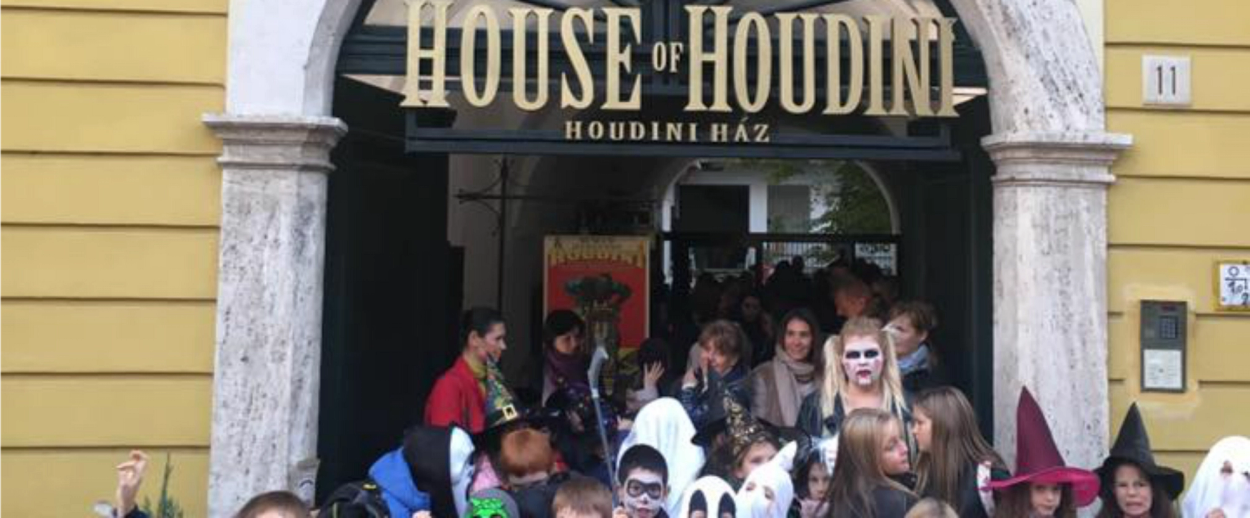Museum Dedicated to Harry Houdini Opens in Budapest
Examining the life and feats of the Jewish escapologist, whose Bible is on display in Hungary




A new museum called The House of Houdini recently opened in Budapest’s castle district, along the Danube River in the Hungarian capital. Among a plethora of the escapist’s possessions is a Bible once owned by a 19-year-old Houdini (né Erich Weiss) who was born in Budapest in 1874. “Amid gleaming chandeliers and old Chesterfield seats,” reported AFP, the red-painted rooms showcase handcuffs and padlocks used by Houdini in performances,” including props used from the 2014 television miniseries starring Adrian Brody. The museum’s opening is in line with the 90th anniversary of Houdini’s death on Halloween in 1926.
In 2010, the Jewish Museum in New York City created an Houdini exhibit of “art and magic” that included period posters, theater ephemera, dramatic historic photographs, and contemporary art inspired by the ecapist, which served as a point from which Rachel Shteir examined Houdini’s two-sided Jewishness.
The first is well-known: his popular death-defying theatrical acts, which represented freedom from his father’s financial failure as well as a more general liberation from the limitations immigrant Jewish life. But there is also Houdini’s less-known second act as a debunker of a mystical group known as the Spiritualists, a crusade that shared much with Emma Goldman’s fiery political tirades and that proved the boundaries of Jewish entertainers in the face of American anti-Semitism.
The article, well worth a read in full, documents key moment, details, and tensions in Houdini’s life: his family’s immigration from Hungary to Wisconsin; the death of his father (a rabbi and poet) from cancer of the tongue when he was just 20 years old (Houdini worked as a newsboy), his partnership with his brother and then solo career, and his relationship with his feverish audiences.
But a casual look at the props Houdini used makes it difficult to explain his escapes as only representing power and success; they also hint at what was at times an adversarial—even hostile—relationship with his audiences. In much the same way that white performers parodied African Americans by wearing blackface, Houdini parodied criminals, freaks, and the mentally insane by wearing their costumes and using their artifacts. Houdini sometimes went to great lengths to prove himself as an almost real criminal, allowing himself to be strip-searched by the police. But the fact that audiences were ultimately able to root for him turned on the distance between him—a celebrity—and those nameless deviants. The hero always escaped from his escapes, albeit sometimes breathless, and other times injured.
Houdini was aware of the blood-lust in his audience, whom he referred to at least once as a mob. They were always trying to expose him, to tell how he did it, to sue him or to imitate him. Houdini mostly won on stage. Besides the exotic costumes—thick, long ropes, shackles, or leather straitjackets he wore onstage as proof of his imprisonment—Houdini performed either nearly nude, like a strong man, or in a tuxedo, like a male Marlene Dietrich. Some of the photos of him brim with barely contained violence, such as the one where the escape artist in a loincloth and chains is poised to dive off Harvard Bridge surrounded by dark-suited, hatted policemen with billy clubs in their belts.
And finally, on his Judaism and involvement with demystifying Spiritualism, “a cult many Americans turned to after losing their loved ones in World War I.”
What he did was entertainment. Spiritualism was magic in supernatural clothing.
Like many Jews of his generation, Houdini had until this moment seemed to stave off anti-Semitism by becoming an entertainer and by intermarrying—his wife, Bess, was Catholic. Houdini lived a mostly secular life. He was as likely to express his own brand of anti-Semitism as he was to brag about his Jewishness. But he did write about anti-Semitism in Europe and in Russia, which he visited while a pogrom was decimating the town of Kishinev.
And yet, once Houdini traded the stage for the pulpit, anti-Semitism rose up to haunt him and to urge him on. It was as if once he stopped playing at his stage escapes, he could no longer be tolerated. He intuited that many Spiritualists belonged to an elite WASP class from which he would always be excluded. In 1922, Arthur Conan Doyle invited his old friend to a séance hosted by his second wife, who supposedly made contact with Houdini’s beloved late mother, Cecilia. While communicating with Cecilia, Lady Doyle drew a cross; then, she transcribed an emotional letter to Houdini. Instead of convincing Houdini, the séance outraged him. He would later point out in public the unlikeliness of his mother, a Jew and a rabbi’s wife, drawing a cross—or communicating in English since she never spoke it in real life. Conan Doyle explained that his wife drew a cross whenever she channeled any spirit and that in the beyond, “Hebrew” was translated into English. The fact that Houdini’s mother spoke not Hebrew but German ended the men’s friendship.
The more ferociously Houdini pursued the Spiritualists, the uglier the anti-Semitic jibes became. Doyle called Houdini “our Disraeli.” When Houdini testified in front of Congress to promote a bill requiring fortune tellers to have licenses, one Spiritualist referred to him as Judas.
Previous: Houdini’s Yahrzeit
Related: Bound for Glory
Jonathan Zalman is a writer and teacher based in Brooklyn.